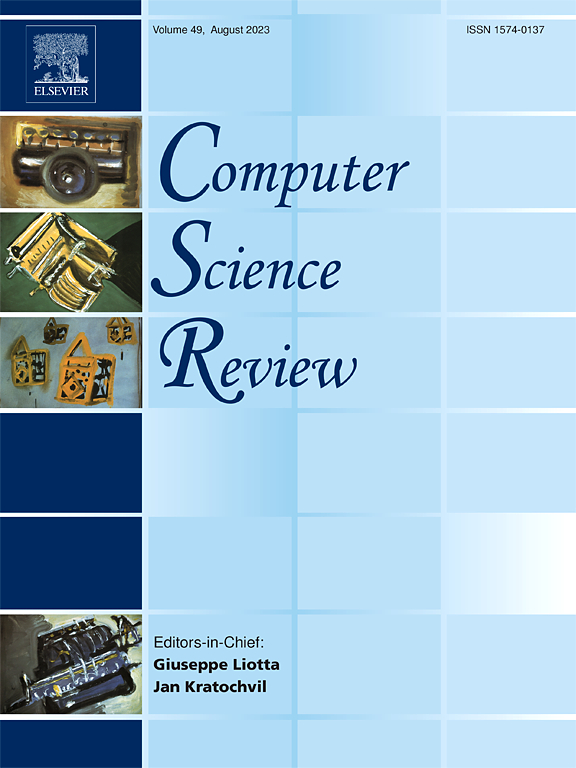Securing Tomorrow of Next-Generation Technologies with Biometrics, State-of-The-Art Techniques, Open Challenges, and Future Research Directions
IF 12.7
1区 计算机科学
Q1 COMPUTER SCIENCE, INFORMATION SYSTEMS
引用次数: 0
Abstract
In the recent past, the increasing use of online applications, from simple food orders to complex banking services, has highlighted the need for strong and reliable network security measures. Traditional password-based authentication schemes have proven vulnerable to various cyber threats, including password guessing, keylogging, phishing, and credential theft, etc. To address these challenges, the research community has turned its attention to biometric technologies as a promising solution for Next-Generation Technologies security. These biometrics technologies use the physiological and behavioral characteristics of humans to verify or confirm their identity in many NGTs such as smartphones, computers, banking systems, and border control systems, etc. However, these NGTs faces several key challenges in the context of biometric systems. This is because the biometrics features change a lot with age, or once someone passes away, compared to the collected data when the person was alive. Therefore, these systems face multidirectional challenges. First, the attackers can use different techniques to compromise the security of an application. Secondly, the disparities inherent in biometric technologies pose significant challenges to their effective implementation because they rely on specific human features such as irises, fingerprints, and faces, etc. Considering that, we conducted a comprehensive survey over the past decade. This survey aimed to identify both the strengths and weaknesses of existing biometric techniques used in NGTs, with the goal of setting the path for future research that can enhance the security of these technologies. Furthermore, it is crucial to address the question of why this paper is necessary, given the presence of several survey papers on the same topic. To answer this question, our work offers several unique contributions based on the undermentioned factors: (i:) Firstly, it familiarizes the reader with the taxonomy of biometrics, followed by enabling technologies and use cases in the context of NGTs, which are ignored in most published papers. (ii:) Secondly, it meticulously examines the reliability of mostly used biometric authentication techniques by highlighting their strong and weak aspects to underscore the research gaps. (iii:) Thirdly, our paper thoroughly explores the requirements of biometric technologies in the context of NGTs to support the literature arguments regarding their inefficiency in meeting the demands of emerging technologies. Moreover, this work provides insights into both the achievements made thus far and the areas that still require attention to enhance the reliability of biometric systems. (iv:) Fourthly, it highlights the open challenges that current biometric methods struggle to overcome in futuristic technologies. (v:) Lastly, we propose research directions with the aim of addressing the highlighted open challenges and maintaining the trust of all stakeholders in biometric technologies.
利用生物识别技术、最先进的技术、开放的挑战和未来的研究方向确保下一代技术的明天
近年来,从简单的订餐到复杂的银行服务,越来越多地使用在线应用程序,突显出对强大而可靠的网络安全措施的需求。传统的基于密码的身份验证方案已被证明容易受到各种网络威胁,包括密码猜测、键盘记录、网络钓鱼和凭证盗窃等。为了应对这些挑战,研究界已经将注意力转向生物识别技术,将其作为下一代技术安全的有前途的解决方案。这些生物识别技术利用人类的生理和行为特征,在智能手机、计算机、银行系统和边境控制系统等许多ngt中验证或确认他们的身份。然而,在生物识别系统的背景下,这些ngt面临着几个关键挑战。这是因为与人生前收集的数据相比,随着年龄的增长或人去世后,生物特征会发生很大变化。因此,这些系统面临着多方面的挑战。首先,攻击者可以使用不同的技术来破坏应用程序的安全性。其次,生物识别技术固有的差异对其有效实施构成了重大挑战,因为它们依赖于特定的人类特征,如虹膜、指纹和面部等。考虑到这一点,我们在过去十年进行了一次全面的调查。本调查旨在确定ngt中使用的现有生物识别技术的优点和缺点,目的是为未来的研究奠定基础,以提高这些技术的安全性。此外,这是至关重要的,以解决这个问题,为什么这篇论文是必要的,鉴于存在几个调查论文在同一主题。为了回答这个问题,我们的工作基于以下因素提供了几个独特的贡献:(i)首先,它使读者熟悉生物识别的分类,其次是在大多数已发表的论文中被忽略的ngt背景下的使能技术和用例。(ii)其次,通过强调其优缺点来强调研究差距,仔细检查了大多数使用的生物识别认证技术的可靠性。(iii)第三,本文深入探讨了生物识别技术在新技术背景下的需求,以支持文献中关于生物识别技术在满足新兴技术需求方面效率低下的论点。此外,这项工作提供了对迄今为止取得的成就和仍然需要注意的领域的见解,以提高生物识别系统的可靠性。第四,它强调了当前生物识别方法在未来技术中难以克服的公开挑战。(v)最后,我们提出了研究方向,旨在解决突出的开放式挑战,并维护所有利益相关者对生物识别技术的信任。
本文章由计算机程序翻译,如有差异,请以英文原文为准。
求助全文
约1分钟内获得全文
求助全文
来源期刊

Computer Science Review
Computer Science-General Computer Science
CiteScore
32.70
自引率
0.00%
发文量
26
审稿时长
51 days
期刊介绍:
Computer Science Review, a publication dedicated to research surveys and expository overviews of open problems in computer science, targets a broad audience within the field seeking comprehensive insights into the latest developments. The journal welcomes articles from various fields as long as their content impacts the advancement of computer science. In particular, articles that review the application of well-known Computer Science methods to other areas are in scope only if these articles advance the fundamental understanding of those methods.
 求助内容:
求助内容: 应助结果提醒方式:
应助结果提醒方式:


